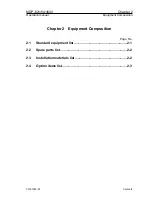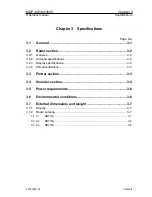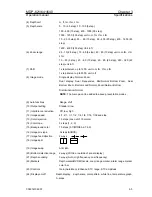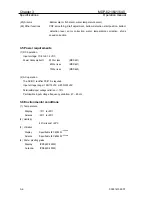
MDP-621/641/640
Chapter1
Operation manual
General Information
1.6 About radar
This paragraph describes basic fundamentals and technical terms used for radar.
1.6.1 What is radar
Radar is an abbreviation of radio detection and ranging. Radar uses very high frequency radio waves
called microwaves. It emits the radio wave all round the circumference and causes it to bounce back
from objects on the surface of the ocean, such as ships, buoy, land, etc. These radio wave reflections
called “echo” are received by the radar antenna and converted to electrical signals. After being
processed, it is shown on the screen in polar form, called PPI (Plan Position Indication). Radar is a
very effective means in locating own ship’s position as well as assessing the risk of collision with other
ships, even in poor visibility conditions such as night-time, foggy circumstances, etc.
The radio wave emitted from the radar antenna is called “pulse”, which is transmitted hundreds to
thousands times per second. The antenna used for radar is called reflector or slotted array, which is
designed to allow the radio wave to be emitted in a fan-shaped beam. Due to this characteristic, radar
provides high definition picture in azimuth, stable detection in elevation, even if own ship rolls or
pitches. As an index of the antenna performance, there are functional parameters called “horizontal
beam width” and “side lobe”. As shown in the following figure, the side lobe is a residual transmission
to each side of the main beam. The narrower the beam, the higher the echo definition and the lower
the side lobe, the fewer the false echoes in arc.
Side lobe
Side lobe level
Beam width
Main lobe
Side lobe
Antenna
The beam in which the strongest radio signal is radiated from the
antenna is called the “main lobe”. Those beams that are radiated in
other directions are referred to as the “side lobes”. The side lobe
level refers to the difference in level (signal strength) between the
largest side lobe and the main lobe.
Figure 1. 6 Antenna pattern
1.6.2 Characteristics of Radar Wave
Radio waves travel out from the antenna while bending slightly along the earth's surface. The amount
they bend depends on atmospheric conditions. The sight distance of a radar generally is about 6%
longer than the optical sight distance and is calculated using this equation:
0093161022-06
1-7






























